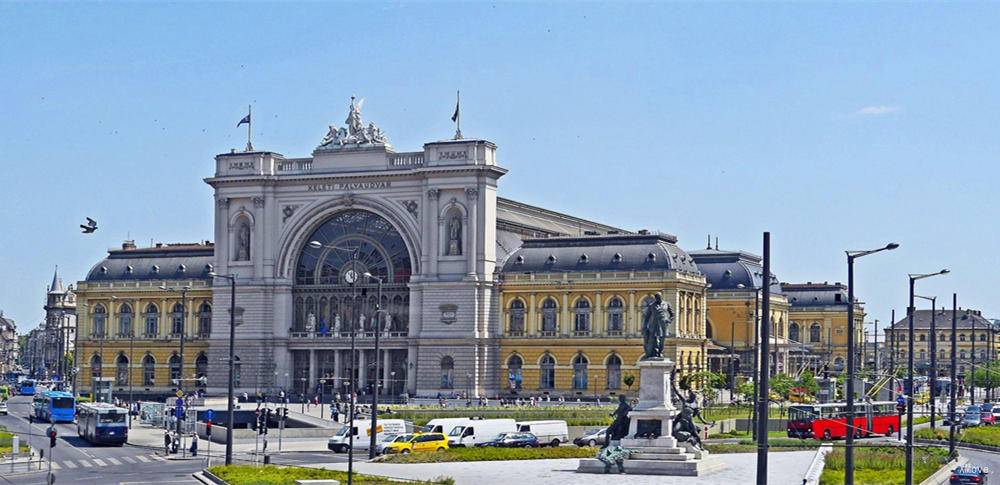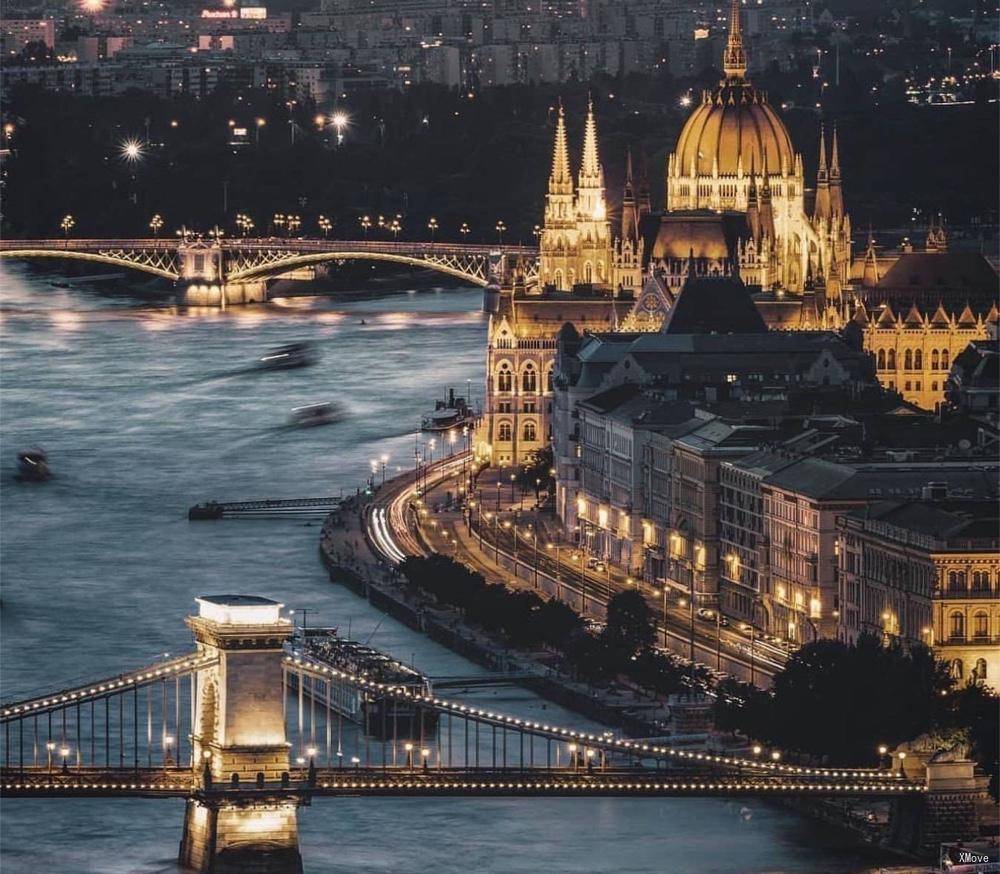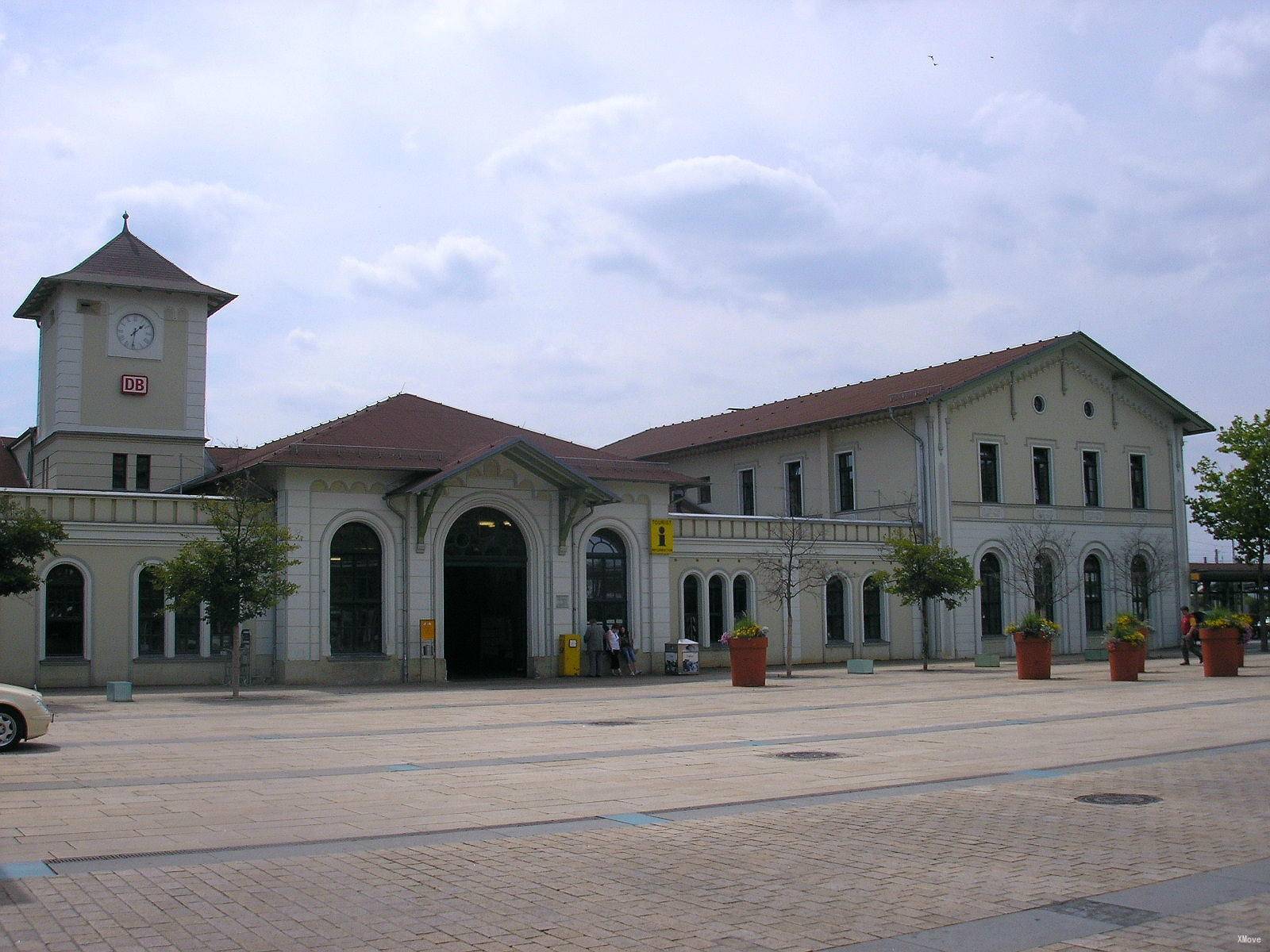Nordhausen to Budapest Central: Trains, Buses, Fares, Today's Connections, Routes, Duration, Types of Trains, Station Guides, Tips, Journey
Germany Train Tickets
Scan QR code, download G2Rail App to see Nordhausen's more live update, station guide, plan and photos



Train schedule Nordhausen to Budapest Central(Budapest Keleti Pályaudva)
Popular train routes departing from Nordhausen
* Berlin Central Station(Berlin Hbf)
* Leipzig Central(Leipzig Hbf)
* Amsterdam Schiphol Airport
* Berlin
Popular train routes arriving in Nordhausen
* Arnhem Sør(Arnhem Zuid)
* Dortmund Sentralstasjon(Dortmund Hbf)
* Stuttgart Sentralstasjon(Stuttgart Hbf)
* Düsseldorf Sentralstasjon(Düsseldorf Hbf)
* München Sentralstasjon(München Hbf)
Popular train routes departing from Budapest Central(Budapest Keleti Pályaudva)
* Vienna Erdberg (U3)(Wien Erdberg (U3))
* Vienna Airport(Wien Flughafen)
* Split
* Ljubljana
* Graz Central(Graz Hbf)
* Prague Central(Praha Hlavní Nádraží (Prag Hl. N.))
* Sofia
Popular train routes arriving in Budapest Central(Budapest Keleti Pályaudva)
* Salzwedel
* Nordhausen
* Cracovie Głowny(Kraków Główny)
* Split
* Vienna Handelskai(Wien Handelskai)
* Achern
* Gare Principale De Zagreb(Zagreb Glavni Kolod.)
Budapest Central
The train connects Budapest with all the central and eastern countries of Europe. Unless otherwise indicated, all trains will arrive at Budapest Keleti pályaudva, so if you arrive in Budapest by train, you should get off at East Railway Station. All international trains depart from the Keleti station, and domestic trains to Miskolc, Eger, Győr and Szombathely also depart from here.
You can choose to take the M2 line and get off at the Keleti pályaudvar stop. The starting point of Metro Line 4, the subway M2 and M4 meet here.
Budapest Central - Station Guide | Departures and Arrivals | Popular Routes

Nordhausen is a city in Thuringia, Germany. It is the capital of the Nordhausen district and the urban centre of northern Thuringia and the southern Harz region; its population is 42,000. Nordhausen is located approximately 60 km (37 miles) north of Erfurt, 80 km (50 miles) west of Halle, 85 km (53 miles) south of Braunschweig and 60 km (37 miles) east of Göttingen. Nordhausen was first mentioned in records in the year 927 and became one of the most important cities in central Germany during the later Middle Ages. The city is situated on the Zorge river, a tributary of the Helme within the fertile region of Goldene Aue (golden floodplain) at the southern edge of the Harz mountains. In the early 13th century, it became a free imperial city, so that it was an independent and republican self-ruled member of the Holy Roman Empire. Due to its long-distance trade, Nordhausen was prosperous and influential, with a population of 8,000 around 1500. It was the third-largest city in Thuringia after Erfurt, today's capital, and Mühlhausen, the other free imperial city in the land. Nordhausen was once known for its tobacco industry and is still known for its distilled spirit, Nordhäuser Doppelkorn. Industrialization accompanied railway construction that linked the cities to major markets in the mid-19th century. In the late 19th century, narrow-gauge railways were constructed in this region through the Harz mountains. In December 1898 the Nordhausen-Wernigerode Railway Company (Nordhausen-Wernigeroder Eisenbahn-Gesellschaft) or NWE added a line, with the full network operating by 1899. The Harz Narrow Gauge Railways are maintained today by local authorities and frequented primarily by tourists. In the early 20th century, this became a centre of the engineering and arms industries. During World War II, the Nazi German government established and operated the nearby KZ Mittelbau-Dora concentration camp, where 60,000 forced labourers had to work in the arms industry. They were prisoners of war and persons from occupied territories. Some 20,000 persons died because of the bad conditions. In April 1945, most of the city was destroyed by Royal Air Force bombings, resulting in 8,800 casualties (more than 20% of the population). Most of the historic buildings in the city were destroyed; it suffered the most damage during the war of any city in Thuringia. A week later the United States troops occupied the city, followed weeks later by the Soviet Red Army. The city was within the Soviet zone of occupation, and later the territory was known as East Germany. Hundreds of German scientists and their families from Nordhausen were among thousands deported to the Soviet Union after the war to work on advanced rocket and other arms engineering projects. Nordhausen is the birthplace of the famous mathematician Oswald Teichmüller, known for his groundbreaking work on the Teichmüller spaces – which were named after him. It is the site of the Nordhausen University of Applied Sciences (Fachhochschule Nordhausen), founded in 1997 after the reunification of Germany. The university has 2,500 students.
Nordhausen - Guide, Attractions, Tours, Sightseeings | Train from/to Nordhausen | Popular RoutesBudapest (, Hungarian pronunciation: [ˈbudɒpɛʃt]) is the capital and the most populous city of Hungary, and the tenth-largest city in the European Union by population within city limits. The city has an estimated population of 1,752,286 over a land area of about 525 square kilometres (203 square miles). Budapest is both a city and county, and forms the centre of the Budapest metropolitan area, which has an area of 7,626 square kilometres (2,944 square miles) and a population of 3,303,786, comprising 33% of the population of Hungary.The history of Budapest began when an early Celtic settlement transformed into the Roman town of Aquincum, the capital of Lower Pannonia. The Hungarians arrived in the territory in the late 9th century. The area was pillaged by the Mongols in 1241. Buda, the settlements on the west bank of the river, became one of the centres of Renaissance humanist culture by the 15th century. The Battle of Mohács, in 1526, was followed by nearly 150 years of Ottoman rule. After the reconquest of Buda in 1686, the region entered a new age of prosperity. Pest-Buda became a global city with the unification of Buda, Óbuda, and Pest on 17 November 1873, with the name 'Budapest' given to the new capital. Budapest also became the co-capital of the Austro-Hungarian Empire, a great power that dissolved in 1918, following World War I. The city was the focal point of the Hungarian Revolution of 1848, the Battle of Budapest in 1945, and the Hungarian Revolution of 1956.Budapest is an Alpha − global city with strengths in commerce, finance, media, art, fashion, research, technology, education, and entertainment. It is Hungary's financial centre and was ranked as the second fastest-developing urban economy in Europe. Budapest is the headquarters of the European Institute of Innovation and Technology, the European Police College and the first foreign office of the China Investment Promotion Agency. Over 40 colleges and universities are located in Budapest, including the Eötvös Loránd University, the Semmelweis University and the Budapest University of Technology and Economics. Opened in 1896, the city's subway system, the Budapest Metro, serves 1.27 million, while the Budapest Tram Network serves 1.08 million passengers daily.Among Budapest's important museums and cultural institutions is the Museum of Fine Arts. Further famous cultural institutions are the Hungarian National Museum, House of Terror, Franz Liszt Academy of Music, Hungarian State Opera House and National Széchényi Library. The central area of the city along the Danube River is classified as a UNESCO World Heritage Site and has several notable monuments, including the Hungarian Parliament, Buda Castle, Fisherman's Bastion, Gresham Palace, Széchenyi Chain Bridge, Matthias Church and the Liberty Statue. Other famous landmarks include Andrássy Avenue, St. Stephen's Basilica, Heroes' Square, the Great Market Hall, the Nyugati Railway Station built by the Eiffel Company of Paris in 1877 and the second-oldest metro line in the world, the Millennium Underground Railway. The city also has around 80 geothermal springs, the largest thermal water cave system, second largest synagogue, and third largest Parliament building in the world. Budapest attracts 4.4 million international tourists per year, making it a popular destination in Europe.
Budapest - Guide, Attractions, Tours, Sightseeings | Train from/to Budapest | Popular Routes
Germany Train Tickets
Scan QR code, download G2Rail App to see Nordhausen's more live update, station guide, plan and photos



Hot Journeys
* Rome(Roma) -> Florence
* Dusseldorf(Düsseldorf) -> Frankfurt
* Brig -> Andermatt
* Munich(Müchen) -> Frankfurt
* Milan -> Florence
* Frankfurt -> Paris
* Venice(Venezia) -> Florence
* Warsaw(Warszawa) -> Berlin(Berlin)
* Cologne(Köln) -> Frankfurt
* Frankfurt -> Dusseldorf(Düsseldorf)
* Kaohsiung(高雄) -> Taipei(台北)
* Rome(Roma) -> Venice(Venezia)
* Arth -> Milan
* Rome(Roma) -> Milan
* Pisa -> Florence
* Lucerne(Luzern) -> Arth
* Seoul(서울) -> Jeonju Si(전주시)
* Bremen(Bremen) -> Freiburg Im Breisgau

